For “Winged Wednesday”:
Reddish Egret


“Reddish Egrets fish like no other birds. They dart here and there, twisting and turning from side to side, then spreading their wings in what appears to be a struggle for balance. But this seemingly strange behavior is actually a very effective hunting strategy: As the bird spreads its wings, it creates a canopy of shade, which attracts its fish prey.
 The Reddish Egret occurs in two color phases — one with slate-blue body plumage and reddish head and neck decorated by shaggy plumes; the other completely white. This handsome egret was nearly extirpated by plume hunters in the early 20th century. Numbers have rebounded since this hunting ended, but it is still an uncommon bird. In the United States, there are roughly 2,000 pairs, with the largest colonies in Texas. Coastal development and climate change pose the biggest threats to this bird’s wetland habitats.
The Reddish Egret occurs in two color phases — one with slate-blue body plumage and reddish head and neck decorated by shaggy plumes; the other completely white. This handsome egret was nearly extirpated by plume hunters in the early 20th century. Numbers have rebounded since this hunting ended, but it is still an uncommon bird. In the United States, there are roughly 2,000 pairs, with the largest colonies in Texas. Coastal development and climate change pose the biggest threats to this bird’s wetland habitats.
You can help the Reddish Egret by joining our Spring 2013 Fundraising Challenge. We urgently need your support to conserve coastal marshes and other critical bird habitats!”
_______
In a fog, migrating birds crash-land on Wisconsin boat
“The exhausted travelers were just about out of gas, so they pulled over to the only rest stop they could find in the fog. To the warblers lost in the fog, the boat probably looked like a giant floating life preserver.
"Most of them were just dead-tired," DNR fisheries technician Tim Kroeff said Tuesday. American redstart, magnolia and palm warblers were among the species landing on the boat, as well as at least one vesper sparrow.
"Some were so tired I could catch them with my hand and bring them into the cabin. Some of them would land and it was almost like they were in hypothermia, they were shivering," said Kroeff, a DNR fisheries technician for three decades.
"It was unusual to see that many at one time. It was nice to have some take a ride back to shore with us."”
More at: http://www.jsonline.com/newswatch/211298941.html
_______
Hawk gives blackbird free ride (gallery)

Red-winged blackbird takes a free ride on the back of a red-tailed hawk. (Eric Dugan)
“Spend enough time in the outdoors and you never know what you might see. Take your camera with a long lens with you and you can bring the memories home to share.
Eric captured this sequence where a red-winged blackbird chased down and landed on the back of a red-tailed hawk — and then enjoyed a free ride into the wild blue yonder.
Two other crazy bird photos I added to the gallery where taken by Stew Bringhurst, who saw a scrub jay land on the back of deer, then — check out the photo — took a perch on its head.” More and gallery at: http://blog.sfgate.com/stienstra/2013/05/14/amazing-sightings-hawk-gives-blackbird-free-ride-gallery/
______
Invasive species: The 18-km2 rat trap
“Five years ago, most of the major islands and smaller rocky outcrops in the Galapagos were home to a plague of invasive mice and rats. The rodents feed on the eggs and young of seabirds, land birds and reptiles, and have brought several species — including the rare Pinzón giant tortoise (Chelonoidisduncanensis) — to the brink of extinction.
Ecuador has successfully eradicated invasive pigs and goats from most of the Galapagos archipelago. Now it is taking on the rats.
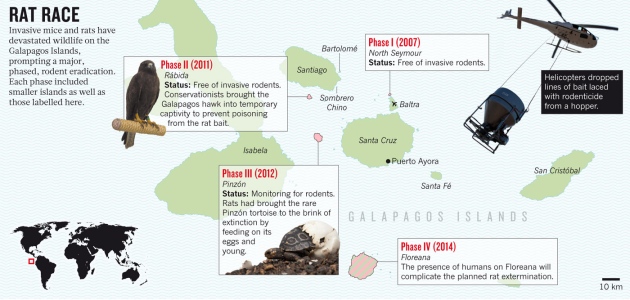
Protecting other species required more drastic measures. The Galapagos hawk perches at the top of the local food chain and, with a diet that ranges from young iguanas to sea lion afterbirth, faced the greatest risk of inadvertent poisoning. So the team decided to bring all territorial hawks into captivity until six weeks after the first bait drop.
In January 2011, when the helicopter delivered bait over Rábida and a handful of smaller islets, Julia Ponder of the University of Minnesota looked after 20 hawks in makeshift aviaries on the nearby island of Santiago. All of the birds survived and were released back to the wild. And after a thorough survey in November 2012, the GNP declared Rábida free of invasive rodents.” More at: http://www.nature.com/news/invasive-species-the-18-km2-rat-trap-1.12992
_______
What the State Birds Should Be
“Seven cardinals but no hawks? Come on! States should have to put more thought into their state bird than I put into picking my socks in the morning. “Ugh, state bird? I dunno, what're the guys next to us doing? Cardinal? OK, let's do that too. Yeah put it on all the signs. Nah, no time to research the bill color, let's just go.” It’s the official state bird! Well, since all these jackanape states are too busy passing laws requiring everyone to own guns or whatever to consider what their state bird should be, I guess I’ll have to do it.
Example:
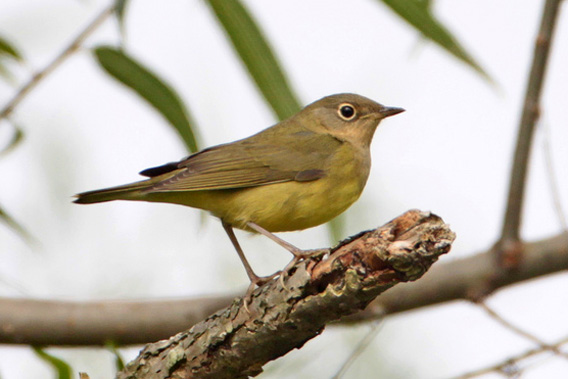 7. Connecticut. Official state bird: American robin
7. Connecticut. Official state bird: American robin
Look, this isn’t even that hard. American robin is American, not special to Connecticut at all. Is there perhaps another choice? One that inspires some more local pride? What it should be: Connecticut warbler” Read more at: http://www.slate.com/articles/health_and_science/science/2013/05/state_bird_improvements_replace_cardinals_and_robins_with_warblers_and_hawks.html
_______
Study Shows Parrots Can Exercise Remarkable Self-Control
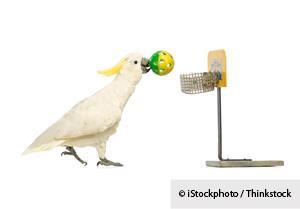 “Scientists at the University of Vienna have made a fascinating discovery about certain birds. It seems they are able to exercise self-control – a trait previously associated only with animals with larger brains.
“Scientists at the University of Vienna have made a fascinating discovery about certain birds. It seems they are able to exercise self-control – a trait previously associated only with animals with larger brains.
For the study, the researchers offered Goffin cockatoos a deal. If they could forego eating a pecan, they could trade it for an even yummier cashew. The cockatoos took the researchers up on their offer.
The cockatoos showed remarkable flexibility as they traded off between immediate and future benefits. Even more impressive was that the birds were able to wait for a preferred nut while holding the original nut in their beaks, in direct contact with their taste buds.” Complete article at: http://healthypets.mercola.com/sites/healthypets/archive/2013/06/12/parrots-exercise-self-control.aspx
_______
New Study Says Stress from Human Activity Can Cause Urban Birds to Abandon Nests Ten Times More Often

Kestrels may be abandoning nests far more in urban environments than in more distant locations. American Kestrels by Steve Wolfe.
“A key finding of the study was that American Kestrels nesting in close proximity to roads and developed areas had elevated stress hormones and high rates of nest abandonment – about ten times higher than kestrels in less-developed areas. American Kestrels are small, colorful falcons often seen perched along roadways and are abundant in urban and agricultural areas.
“In the case of the kestrel, the bird is possibly drawn into the urban environment by the abundant nesting and perching opportunities that environment provides and by the improved prey visibility provided by shorter grass. Unfortunately, this dynamic creates an ecological trap as ultimately the stresses caused by human activity lead the bird to abandon nests far more frequently,” said Heath.” More at: http://www.abcbirds.org/newsandreports/releases/130513.html
________
“Win a Pair of Nikon  Binoculars!
Binoculars!
We want your feedback!
Take our listener survey (just five minutes of your time) and get a new BirdNote ringtone, composed by Nancy Rumbel. You could also win a pair of Nikon binoculars, courtesy of the Seattle Audubon Nature Shop.”
BirdNote Weekly Preview: Upcoming Shows
Common Cuckoo
SUNDAY
Mahler's Cuckoo
by Frank Corrado
LISTEN NOW ►
Western Gull chick
MONDAY
City Gulls - Rooftop Nesters
by Ellen Blackstone
LISTEN NOW ►
Baltimore Oriole
TUESDAY
Organization for Tropical Studies Turns 50
featuring Gordon Orians
LISTEN NOW ►
Great Horned Owl chick
WEDNESDAY
How Nestlings
Leave the Nest
by Frances Wood
LISTEN NOW ►
Chestnut-mandibled Toucan
THURSDAY
Organization for Tropical Studies Facilitates Research
featuring Gordon Orians
LISTEN NOW ►
Lapland Longspur
FRIDAY
The Longest Day of the Year
by Bob Sundstrom
LISTEN NOW ►
Frank Chapman
SATURDAY
Frank Chapman
And The Solitaire
by Frances Wood
LISTEN NOW ►
--------
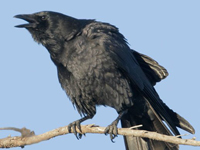 Sights & Sounds
Sights & Sounds
”Crows and ravens are the only birds in North America that are completely black. But they have much more in common than color: they’re among the smartest birds on the planet. So which is which? And who’s smarter?” Join BirdNote's Ellen Blackstone to find out >> Learn more
_______
And our winged friends, the bees:
In the Buzz About Bees, Don’t Forget the Natives
“Honeybees are native to Europe, imported to North America during the 1600s.
Why We Need Natives
A wild bee pollinates a pumpkin flower in an Ephraim, Utah, garden. Photo by Paul Gardner.
Yet with all the attention being paid to honeybees, I wonder if we’re overlooking an even more important story: the critical role wild, native bees play pollinating plants both in natural and agricultural systems. And unlike domestic honeybees, these natives do it for FREE.
Beyond their honey-making prowess, domestic honeybees are worth tens of billions of dollars to U.S farmers and beekeepers, who truck colonies back and forth across the country to pollinate commercial crops such as almonds, soybeans and watermelon.
A study finding that on 21 out of 23 farms in the Delaware Valley of New Jersey, wild bees fully pollinated commercially grown watermelons with no help from honeybees. “If we lost all honeybees in this region to colony-collapse disorder tomorrow,” she said, “between 88 and 90 percent of the watermelon crop would be fine.” If honeybees continue to decline—and many experts suspect they will—wild bees will become even more important in the future.” More at: http://blog.nwf.org/2013/05/in-the-buzz-about-bees-dont-forget-the-natives/
_______
On This Day:
JUNETEENTH.
“On June 19 ("Juneteenth"), 1865, Union general Gordon Granger arrived in Galveston and issued General Order Number 3, which read in part, "The people of Texas are informed that, in accordance with a proclamation from the Executive of the United States, all slaves are free.”
_______
First nickelodeon opens, Jun 19, 1905:
“On this day in 1905, some 450 people attend the opening day of the world’s first nickelodeon, located in Pittsburgh, Pennsylvania, and developed by the showman Harry Davis. The storefront theater boasted 96 seats and charged each patron five cents. Nickelodeons (named for a combination of the admission cost and the Greek word for “theater”) soon spread across the country. Their usual offerings included live vaudeville acts as well as short films. By 1907, some 2 million Americans had visited a nickelodeon, and the storefront theaters remained the main outlet for films until they were replaced around 1910 by large modern theaters.”
_______
Yesterday:
When Misty and I went to get Jay, we had a longer walk, as he wasn’t ready.
![images[7] images[7]](https://blogger.googleusercontent.com/img/b/R29vZ2xl/AVvXsEiWWJge5bz1nV62Xz0P21lY_aVq9GIOTkgurFtNa-5IETtZ2Mm3eY3ks_WNcuf5SAxdtJiUZ-yLkpIE6RPlKzYEY_E_cqSERMKPGD46S3Xa1zdxMwWhv1YU9pfcP74n-dsNaNNzeLiTHKaU/?imgmax=800)

The weather wasn’t so humid, so it was pleasant working outside. Then it cooled things off a bit when we had a rain shower yesterday.




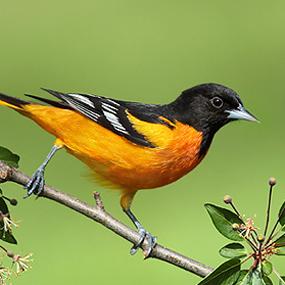




















No comments:
Post a Comment